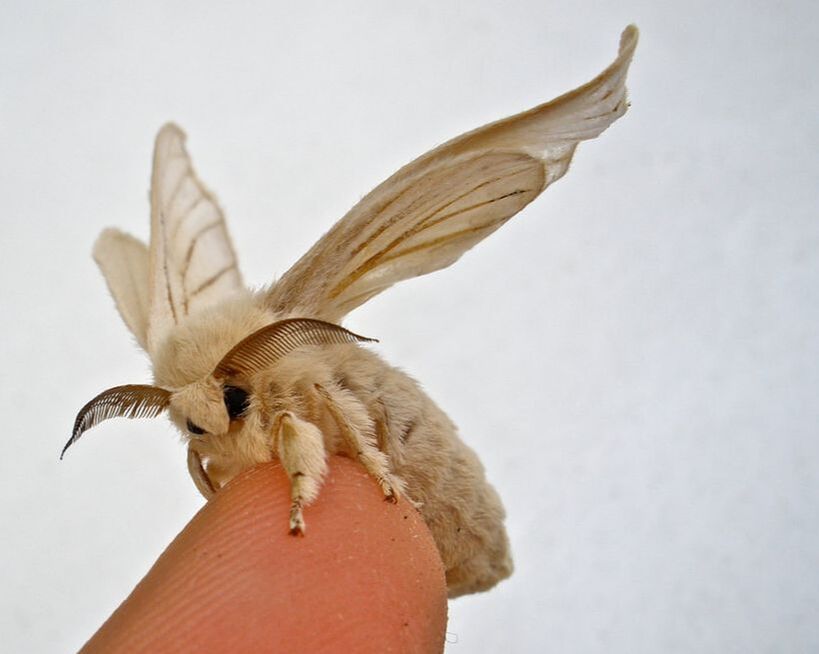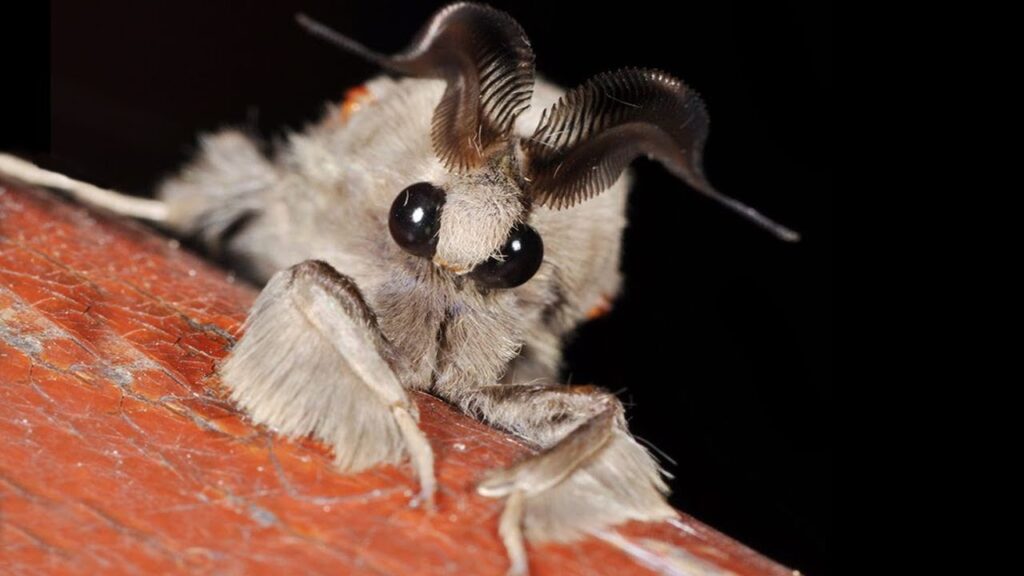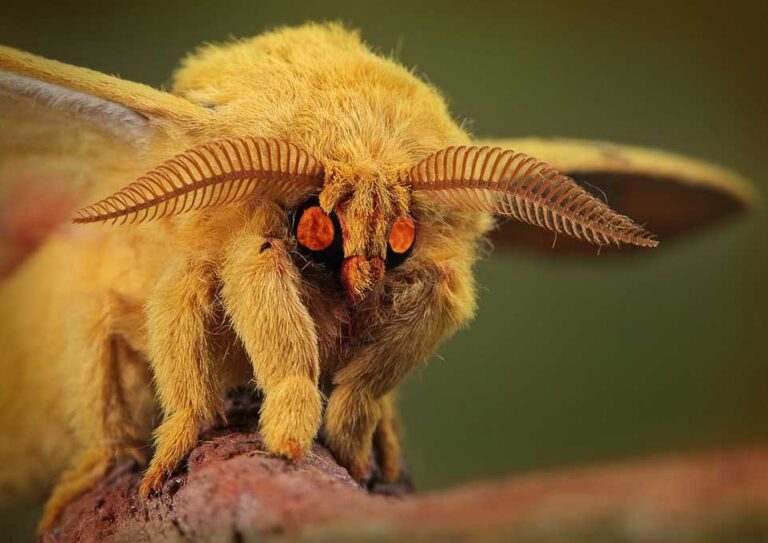No, moths do not drink blood. Moths are insects, and they primarily feed on nectar from flowers, sap from trees, or other sugary liquids. They have a proboscis, which is a long, tubular mouthpart that they use to suck up these sweet fluids.
In addition, some moths may also consume other liquids, such as rotting fruit juices or water, but they do not feed on blood.
Blood-feeding insects are typically a different group altogether, such as mosquitoes or ticks, which have specialized mouthparts for piercing the skin of animals and consuming their blood. Moths are not equipped for this type of feeding behavior.
How do moths feed?
Moths, like butterflies, have a specialized mouthpart called a proboscis. The proboscis is a long, tubular structure that functions like a straw. It consists of two halves that are joined together to form a single tube. This structure is coiled up beneath the moth’s head when not in use.
Explanation of how moths use their proboscis to feed
Moths use their proboscis to feed on liquids. When they locate a suitable food source, they unfurl their proboscis and insert it into the source. The proboscis acts like a drinking straw, allowing moths to access the liquid. Muscles in the proboscis contract and expand to create a suction force, drawing the liquid up into the moth’s digestive system.
Moths are not equipped for chewing solid food, so their proboscis is adapted specifically for sipping liquids. This feeding mechanism is highly effective for extracting nectar from flowers or consuming other liquid substances.
Examples of common food sources for moths (nectar, sap, fruit juices):

Nectar: Nectar is one of the primary food sources for moths. Moths are important pollinators for many flowering plants, and they obtain nectar by inserting their proboscis into the flowers’ nectaries. As they feed on nectar, moths inadvertently transfer pollen from one flower to another, facilitating plant reproduction.
Sap: Some species of moths feed on tree sap. They access sap by inserting their proboscis into tree wounds or by feeding on sap that oozes from damaged tree bark. Sap provides moths with essential nutrients and sugars.
Fruit juices: Moths are also known to feed on ripe or rotting fruits. They pierce the skin of the fruit with their proboscis to access the sugary juices inside.
In doing so, moths can sometimes be considered pests in agriculture, as they may damage crops like peaches or apples.
Other liquids: In addition to the above-mentioned sources, moths may occasionally feed on other liquid substances, such as honeydew produced by aphids or puddles of water. Moreover, these sources can provide moths with essential nutrients and hydration.
How do blood-feeding insects differ from moths?
Moths are harmless nectar feeders, while blood-feeding insects have evolved to obtain blood from their hosts as a primary source of sustenance.
Identification of blood-feeding insects (mosquitoes, ticks, etc.):
Mosquitoes: Mosquitoes are perhaps the most well-known blood-feeding insects. Only female mosquitoes feed on blood, which they require for the development of their eggs.
In addition, they have needle-like mouthparts called proboscises, which they use to pierce the skin of animals (including humans) and extract blood.
Ticks: Ticks are another group of blood-feeding insects, although they are more closely related to arachnids (like spiders) than insects.
Moreover, ticks also have specialized mouthparts called hypostomes that they use to attach to the skin of their hosts and feed on blood.
Fleas: Fleas are small, wingless insects that feed on the blood of mammals and birds. They possess piercing-sucking mouthparts that allow them to bite through the skin of their host and consume blood.
Bedbugs: Bedbugs are blood-feeding insects that primarily feed on the blood of humans and other warm-blooded animals. They have a long, pointed proboscis that they use to pierce the skin and feed on blood.
Explanation of specialized mouthparts for blood-feeding:
Blood-feeding insects have evolved specialized mouthparts that enable them to obtain blood from their hosts. These mouthparts are adapted for piercing the skin, finding blood vessels, and extracting blood. For example:
Mosquitoes: A mosquito’s proboscis is equipped with tiny, saw-like serrations that allow it to cut through the skin and locate blood vessels. Mosquitoes also inject saliva into the wound to prevent blood from clotting while they feed.
Ticks: Ticks have barbed mouthparts that help them anchor securely to their host’s skin. They secrete substances that prevent the host’s blood from clotting and may also transmit diseases.
Fleas: Fleas have sharp, piercing mouthparts that they use to bite into their host’s skin and access blood. They are adapted for quick feeding and can consume several times their body weight in blood.
Bedbugs: Bedbugs have a long, needle-like proboscis that they insert into the skin. They release anticoagulants to keep the blood flowing while they feed.
Contrast between moth feeding habits and blood-feeding insects
Diet: The most significant contrast is in their diet. Moths primarily feed on liquids, such as nectar, sap, and fruit juices, while blood-feeding insects consume blood as their primary source of nutrition.
Mouthparts: Moths have a coiled proboscis adapted for sipping liquids, whereas blood-feeding insects have specialized mouthparts designed for piercing the skin and accessing blood vessels.
Ecological roles: Moths play a crucial role in pollination by feeding on nectar and inadvertently transferring pollen between flowers, aiding in plant reproduction. Blood-feeding insects, on the other hand, often act as disease vectors, transmitting pathogens from one host to another.
Harm to hosts: Blood-feeding insects can cause harm to their hosts by transmitting diseases, whereas moths, as nectar feeders, do not pose similar health risks to animals or humans.
What are misconceptions and myths about moths?

Moths are essential pollinators and contribute positively to ecosystems by aiding in the reproduction of numerous plant species, making them valuable and fascinating creatures in the natural world.
Discussion of any misconceptions or myths about moths drinking blood:
Vampire Moths: One common misconception is the belief in “vampire moths.” Some people incorrectly associate moths with blood-sucking behavior, likely due to their misinterpretation of moth-related folklore or vampire-themed media. Vampire moths are not real; moths do not drink blood.
Attracted to Light as Blood: Another misconception is that moths are attracted to light because they mistake it for blood.
Furthermore, this belief is not accurate. Moths are attracted to light sources due to their natural navigation behavior, which often leads them to artificial light instead of moonlight.
Blood-Sucking Clothes Moths: There is a misunderstanding that clothes moths, which can infest and damage natural fibers like wool, are blood-sucking insects. In reality, clothes moths feed on the fibers of textiles, not blood.
Clarification of the facts regarding moth feeding behavior
To clarify the facts about moth feeding behavior, it’s important to reiterate that moths are primarily nectar-feeding insects. They have a specialized proboscis adapted for sipping liquids.
Furthermore, moths feed on a variety of natural sources, including nectar from flowers, sap from trees, and occasionally fruit juices or other sugary substances. Moths play a vital role in pollination and are generally harmless to humans and animals.
Additionally, moths do not have the physiological adaptations or behaviors required for blood-feeding. Unlike blood-feeding insects like mosquitoes and ticks, moths lack specialized mouthparts for piercing skin or accessing blood vessels. Therefore, the idea of moths drinking blood is entirely inaccurate.
FAQ’s
Why are they called vampire moths?
They are called vampire moths due to a historical misconception, but they don’t actually drink blood. They were wrongly associated with vampires because of their appearance and nighttime activity.
Do moths have blood?
No, moths do not have blood in the same way humans or vertebrates do. They have a fluid called “hemolymph,” which serves a similar purpose in their bodies.
How big are vampire moths?
Vampire moths are relatively small, with a wingspan of about 1 to 2 inches, depending on the species.
Is a Death’s-head hawkmoth a butterfly?
No, a Death’s-head hawkmoth is not a butterfly; it’s a type of moth known for its distinctive skull-like pattern on its thorax.
Is a luna moth real?
Yes, a luna moth is a real species of moth known for its beautiful green wings and distinctive appearance.
Are moths related to witches?
Moths are not related to witches. The association between moths and witches is often a part of folklore and superstition.
What is moth blood called?
Moth blood is called “hemolymph.” It is a fluid that circulates through their bodies and plays a role similar to blood in some functions.
Final Thought
In conclusion, moths are not blood-drinking insects. They are more like polite party guests at a flower’s nectar buffet, using their straw-like mouths to sip sweet liquids like nectar, sap, and fruit juices.
Additionally, it’s important to remember that moths are not interested in blood, and they don’t have the tools or tricks for blood-sucking like those pesky mosquitoes or ticks.
So, if you ever come across a moth fluttering around your porch light, you can be sure it’s just looking for a sip of something sweet, not a sip of your blood.
Furthermore, moths play a crucial role in nature by helping flowers make new flowers, and understanding their feeding habits helps us appreciate these fascinating creatures even more.

